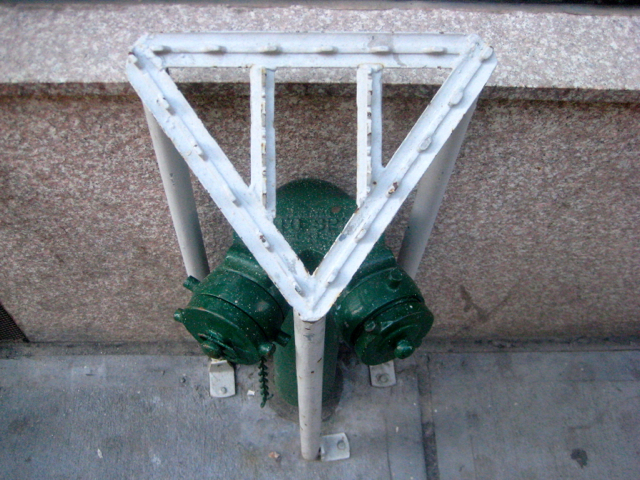
110 W. 25th Street. (All addresses approximate.)
Should you require a reminder that design need not be beautiful in order to succeed, consider a visit to the block of West 25th Street between Sixth and Seventh avenues, in Manhattan.
There is no great rush, because what you’ll see isn’t a gallery show or other ephemeral display. It’s more like series of permanent installations—or perhaps what could even be considered street “interventions.” Specifically, what’s on view along this single block are some sixteen examples of what I’ll call Standpipe Defenders. They are far from beautiful. They are not meant to be beautiful. But they are very unpleasantly effective.

138 W. 25th Street
As it happens, “unpleasant design” and “unkind architecture” have been getting some attention lately. The most prominent examples involve elements designed into the built environment for the purpose of warding off homeless people seeking a place to rest or sleep. Critiques range from outrage about “anti-homeless spikes” in London and elsewhere last year to Bryan Finoki’s recent examination of “Architecture vs. the People” here on Design Observer.
“Hostile” or “defensive” or “disciplinary” architecture isn’t solely designed for (or rather, against) the homeless. Some thwarts skateboarding, for instance. Other examples have a security function—even the White House is looking to devise “A Fence That Says Halt! (With Curb Appeal),” as The Times recently put it. My wife has long referred to examples of this broad category of street-level design as “decorative deterrents.”
Probably the recent attention is what had this discouraging style lurking in the back of my mind during a recent visit to New York. Normally I might have overlooked these Standpipe Defenders. But once one caught my eye, I couldn’t help but notice that this stretch of 25th Street is practically an open-air museum devoted to this very specific variety of decorative deterrent.
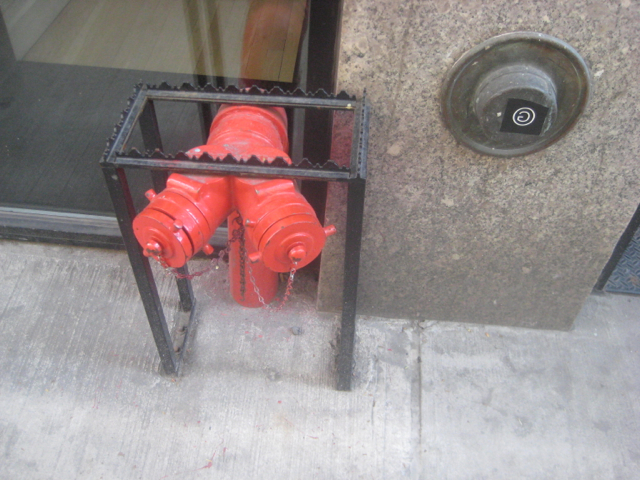
137–139 W. 25th Street (service entrance)
By my count, sixteen of the thirty-six standpipes on the sidewalks of this block are defended by spikey constructions that strongly discourage sitting. Not surprisingly, I chose not to test their effectiveness by actually attempting to sit on any of these things. I mean: Just look at them. The real design goal, I’d say, is to project such extreme potential discomfort that the passerby would not even think of using a defended standpipe for a rest, however brief. An effective Standpipe Defender is, in short, a visual threat.
Despite the unity of function, an impressive variety of forms have been deployed. You could easily organize a leisurely walking tour of this block, devoted to spotting, discussing and critiquing each anti-sitting design strategy. Which one, for example, displays the most aesthetically effective (i.e., immediately intimidating) formal approach?
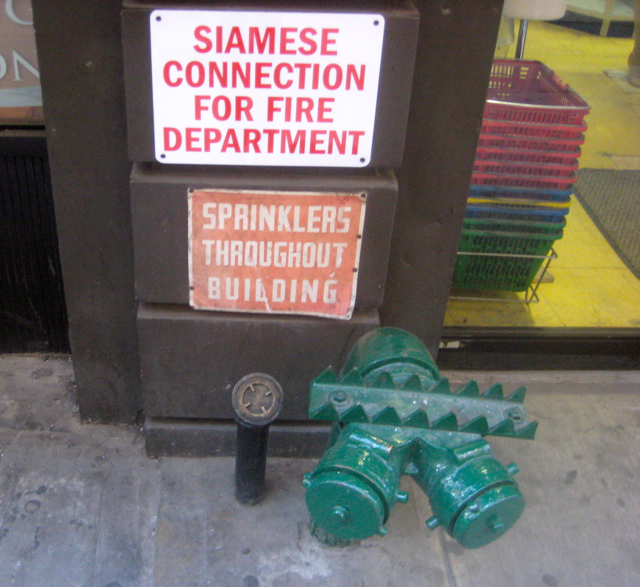
138 W. 25th Street
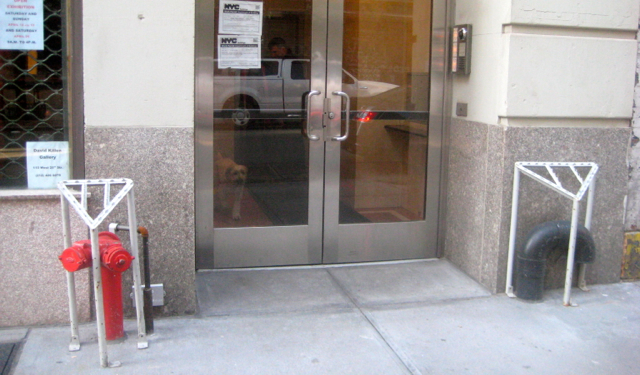
110 W. 25th St.
Why are some visually softened by paint jobs that (sort of) match adjacent buildings?
Who thought up the anti-seating double-down of making them not just spikey but slanted?
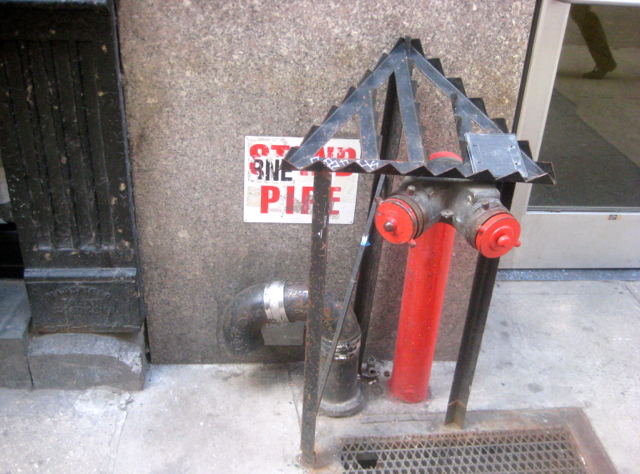
130 W. 25th Street
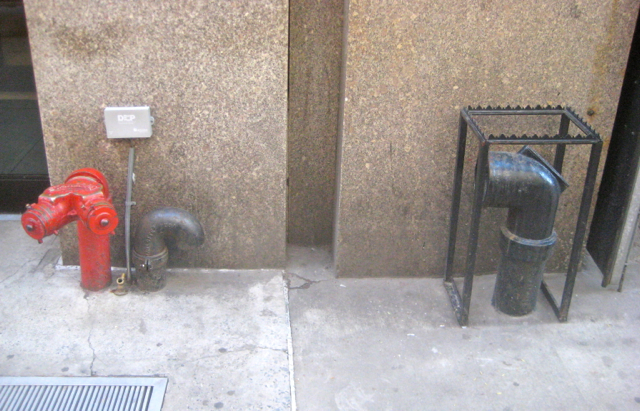
147 W. 25th Street
Why is any given standpipe defended, even when its immediate neighbor is not?
Which standpipe defenders feature designs that succeed in sitting-discouragement—yet fail in other ways?
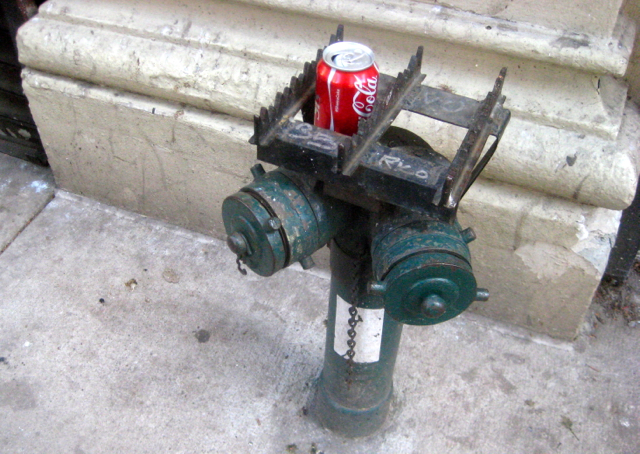
109 W. 25th Street
Or maybe more interesting than this hypothetical tour is the exercise of speculating about just what it was that inspired this concentrated burst of standpipe defense. Was there, at some point in the past, an outbreak of standpipe-sitting on this section of 25th Street?
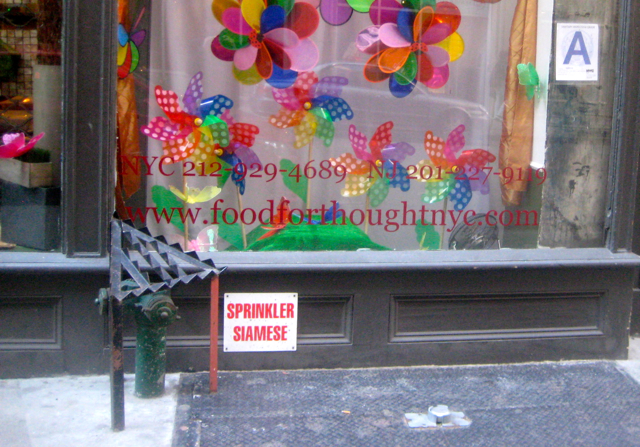
130 W. 25th Street
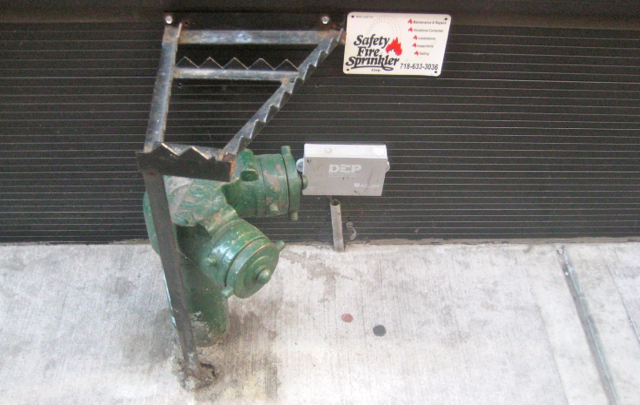
134 W. 25th Street
Imagine some warped-history episode out of a Ben Katchor cartoon: First the block’s building owners were united in their desire to address the area’s reputation as Manhattan’s Standpipe Leisure District. But then squabbles about the best design solution escalated into a de facto competition. And the resulting menagerie of competing standpipe defense styles lives on to this day. …
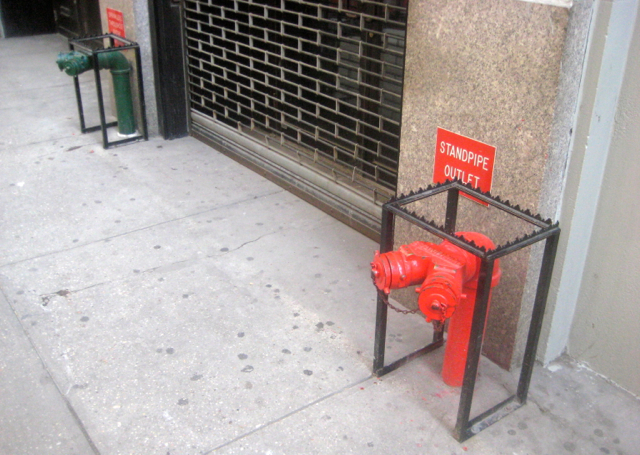
133 W. 25th Street
Presumably the real story is more banal. But still, the blunt menace of these unpleasant designs is accidentally evocative. They are worth noticing, and thinking about. They might even be worth lingering over. But of course you’ll probably have to remain standing while doing so—for obvious reasons.
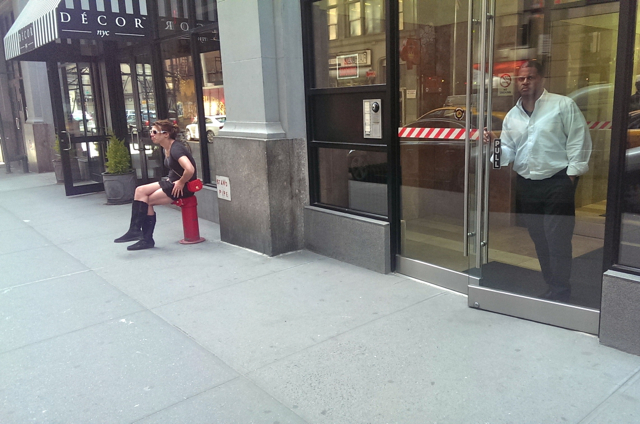
Undefended standpipe: W. 25th Street


Comments [3]
05.06.15
06:14
05.07.15
10:08
05.07.15
07:43